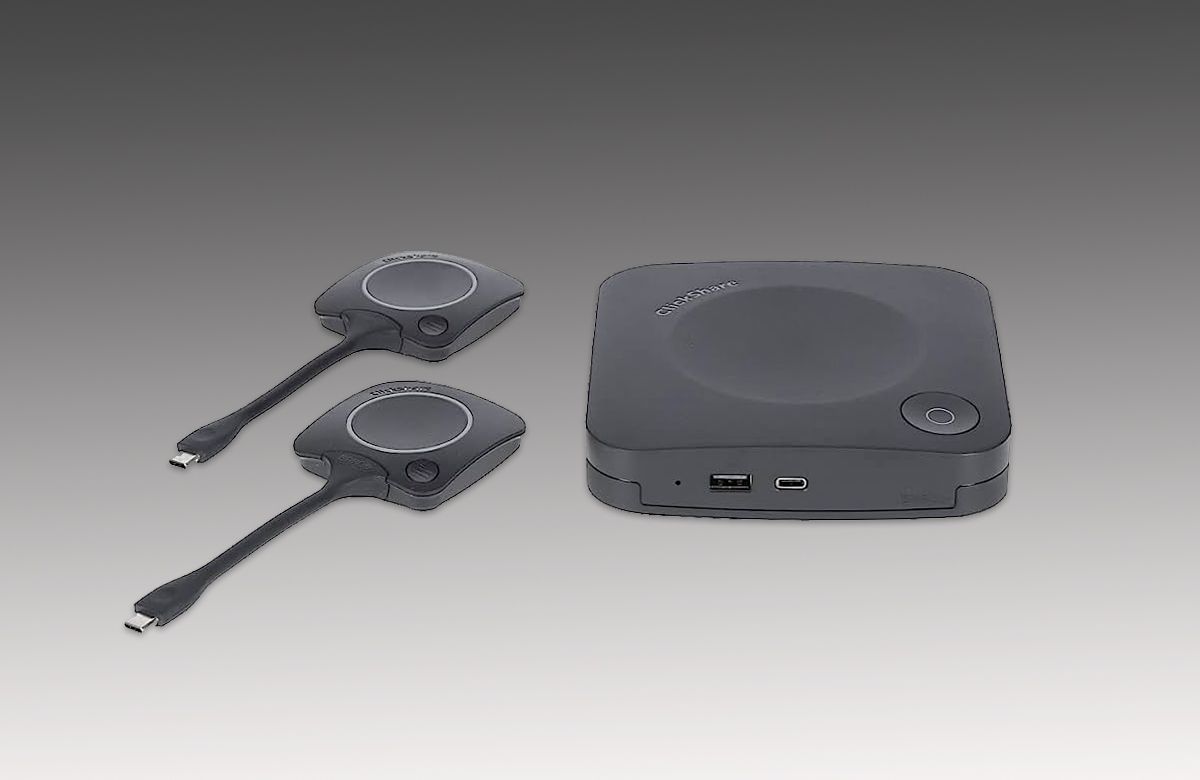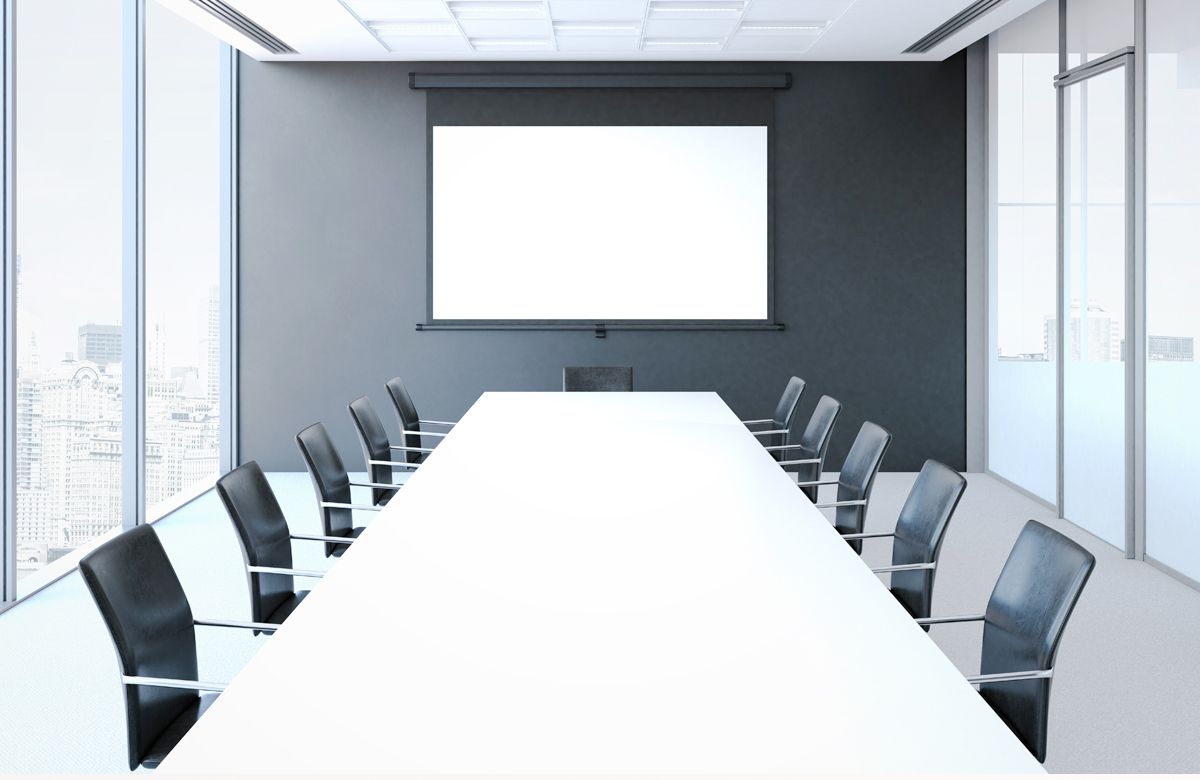Boardroom Technology – For Meetings With Impact

The boardroom is the nerve centre of a business, a space in which the decisions made will influence how the company functions from the highest echelons to the most junior members of the enterprise.
Whether you’re at the top of a global conglomerate or helping to nurture a disruptive new start-up, the boardroom is crucial in driving the business in the right direction. Such an important space requires careful consideration and harmony between design and technology will be key.
An Agile Evolution
Teem’s Workplace Productivity Analytics Index revealed that nearly 23 per cent of meetings were ad hoc in October 2016, rising from just under 20 per cent in January. But most employees don’t need research to tell you that the business world is adopting an increasingly spontaneous approach towards meetings. Gone are the days when there was time to pre-arrange requirements for a meeting space with the IT team; businesses today need agile boardrooms that are fully functioning at a moment’s notice.
At the same time, expectations for design are as high as ever and board members won’t compromise on looks for the sake of tech. Minimalism and clean lines remain eternally popular but to make deliver this aesthetic demands the smart deployment of technology solutions.
The Centre Point
We don’t wish to be elitist, but if there’s a meeting room you’re going to want to impress in, it’s the boardroom, so the centre point of the room – the shared display screen – is one purchase decision you need to get right. Resolution, screen size and technology all matter if you want to ensure that everyone can clearly see the information under discussion.
Resolution
What it comes to resolution, the answer lies in the detail. Ask the board members what kind of data and presentations they analyse in the boardroom. Are they looking at financial information? Graphs? Spreadsheets? Datasets? Slideshows? Videos? Product specifications?
For most boards it’s a mix but the display screen needs to cater to the most detailed type of content, which in practice means the room needs a high resolution screen. 4K UHD (ultra high definition) will ensure a crisp sharp image when displaying even the most detailed facts and figures and it’s largely seen as a ‘future proof’ piece of AV technology, designed to deliver to the most demanding of expectations for years to come.
If you know for sure that the most detailed presentation your board will be reviewing is a slideshow, you can consider going with a 1080p resolution, but a 4K product will prove a better long term investment if you can slightly stretch the budget.
Size
Screen size is the next big question – so big in fact that we’ve dedicated an entire guide to picking the right screen size. For a boardroom, the main thing to consider with regards to screen size is of course the size of the boardroom itself. The bigger the room, the bigger the screen.
The other option here is to install multiple screens of smaller sizes around the room. Given that price points tend to jump up for display screens at around the 60-inch mark, this might well result in a lower overall cost than one single 90-inch-plus screen at the front of the room.
Technology
Finally, there’s the type of technology behind the screen. In practice, this is more about deciding what your board will want from the display and picking the technology that most closely delivers, rather than working backwards from the tech standpoint.
The four main choices are:
1. LCD
LCD, or liquid crystal display, screens are backlit. They offer a good picture quality and will be a reliable screen with a particularly long lifespan. They’re not, however, all that energy efficient, and the backlit technology also means that they won’t be the brightest option available.
2. LED.
LED, or light-emitting diode technology screens, are also backlit. But unlike the cold-cathode fluorescent lamps used in LCD screens, LEDs rely on, yes you guessed it, LEDs to light the screen. LED technology is well established now and as such there are plenty of affordable options on the market. Furthermore, the difference in lightsource has solved the poor brightness and energy efficiency issues of the LCD screens. As a result, LEDs are a popular choice.
3. OLED.
Despite the name, OLED screens or organic light-emitting diode screens, are not a direct evolution on LED technology. They are in fact a groundbreaking step up in tech. OLEDs contain thin flexible sheets of an organic electroluminescent material. In response to an electric current, this sheet emits light. The result? A screen that works without a backlight. In practice, this means great colour quality, in particular very deep levels of black, and very thin screens, thus increasing boardroom design options. OLEDs are likely to push the budget at the moment, but their performance for creative and video content is unrivalled. The technology is still relatively young, but their potential means that we could well see them come to dominate the market.
4. Projectors.
Projectors are a great option for larger boardrooms, especially when coupled with displays that replicate the content around the room for all to see. The size of picture that can be displayed far outweighs that of any other screen type and advancements in technology mean projectors can deliver excellent image quality.
Downsides include their impact on room layout – if there’s a lot of ambient light many cheaper projectors will find it difficult to display a clear picture, and further problems can be caused in finding the right location for both the projector and its screen – and the ongoing cost of replacing bulbs every two to three years. However laser projectors are making a big difference in regards to ongoing costs if you can afford the extra initial cost for this more recent technology.
Smart, Scalable, Connected
A boardroom display screen is no use if the board can’t use it in the way they want. The higher up the organisation, the less time people are willing to sacrifice to work around technical problems, so the connectivity solutions provided at the board level need to be the right fit for the team.
The Barco ClickShare family of products is a smart choice for agile connectivity. The one-click collaboration device has an HDMI output with up to 1920 x 1200p output resolution, ensuring crisp, clear visuals for all the company directors in the room. It also works with most devices, from iPhones to Samsung Galaxy devices, tablets, laptops and PCs.
Its wireless connection to the main display, cross-device functionality, and no set-up time makes it a perfect for the demands of a boardroom. It also provides the option to scale up as teams grow and evolve. A split-screen functionality, for example, is a great way of addressing multiple issues or reviewing a more complex problem with input from more than one contributor at once. The CSE-200 – Barco’s mid-range offering in the ClickShare range – has the answer in this situation, in allowing two users to connect to the main display in unison and up to 16 participants to collaborate on their own devices at the same time.
With over 60 per cent of business leaders admitting that their meetings would be far more effective if they were able to view content from more than one person’s device on one screen, presentation and collaboration technology like Barco ClickShare is becoming an expectation from many boards who want to keep meetings time-efficient and productive.
Staying Secure
Future growth plans, delicate staffing decisions and confidential financial information are all part of daily life for boardroom discussions so the design and technology of the room must maximise the security of the information under discussion.
This needs to be


